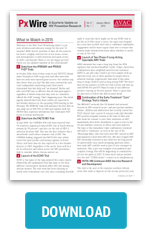Nichole Little is the Founder and Executive Director at Sexual Health Education Research & Outreach (SHERO) and an AVAC PxROAR member. She is also part of the first cohort of the CROI Community Delegate Program, which provides an opportunity for additional community representatives to attend the meeting. She writes about how despite the new PrEP trial results, there needs to be more focus on women’s health and prevention needs.
On Tuesday, during the 2015 Conference on Retroviruses and Opportunistic Infections (CROI), findings from the iPERGAY PrEP trial were released. The results were exciting and determined that “on demand” or intermittent use of TDF/FTC (Truvada) led to an 86 percent reduction in HIV risk in the trial participants—all of whom are gay men. Absolutely awesome news.
Now… How do I go home and proudly deliver this information to a room full of women who have been waiting for the trial that tells them that their lives and sexual health matter. Us advocates, activists, educators and researchers know the nuances of who and how to fill a clinical trial. We know that women in sero-discordant relationships have done very well in PrEP studies. But, at the end of the day, good news is only good news if it directly impacts your life. These women are waiting for a piece of good news to come out of one of these conferences that will directly impact their lives. They want to hear the words, PrEP WORKS IN WOMEN, especially young women not in serodisordant couples. And since we’ve done such a good job, as community advocates in educating folks about the clinical trials process, they want us to prove women in the US will use PrEP and it will protect them.
During CROI’s opening plenary, Dr. Susan Buchbinder, UCSF, presented a talk titled HIV Prevention 2.0: What’s Next? Dr. Buchbinder discussed the challenges of incorporating the new biomedical prevention interventions with what she called “old interventions,” defined as public health campaigns, testing and condoms. She discussed the data that show post-HIV screening counseling may be a deterrent to those individuals testing negative for HIV. Is it the information we are delivering to them not effective? This concerned me because a number of the women I talk to understand the need for a female initiated HIV prevention strategy but they are no longer interested in being treated like little men or after thoughts. PrEP is indicated for men and women. But honestly, I cannot point them to the pudding where the proof is showing the type of information these iPERGAY results show.
The data around PrEP and women have not always been the most promising—think VOICE and FEM PrEP. The trials showed many women underestimated their HIV risk, which is partly the reason they didn’t use PrEP or gel. During the U.S. Women and PrEP pre-CROI conference face-to-face meeting, advocates from across the country convened to review the current biomedical prevention agenda with the goal to ensure that women are properly included in the work toward the end game. One point that threaded its way into every discussion we had during the day-long meeting was how do we determine what a high-risk woman is.
It was pointed out by Marsha Jones, from The Afiya Center, that we often don’t know that something is a risk until it is happening. The idea that the complexities of the lives of women put us in the position where it is difficult to place a target where we can then deliver effective advocacy. The idea that to identify a person as MSM is probably not offensive if you are gay or a man who has sex with other men. It makes moving into that population with a little more ease of motion because you know who you are looking for and have effective ways to reach them. With a woman, her husband may be her risk. For another woman, the stress of single-handedly having to financially provide for family may be her risk. Hell, for a great number of women… walking down the street with breasts puts us at a level of risk that men just cannot understand.
So where I am super excited that the IPERGAY results were so promising… I am challenged with how I take this information back into the community I serve. I can hear the question “What about us?” I’ve heard it year after year. All women want to know is that they are going to be able to have an HIV prevention option that is not going to interfere with the reproductive process, make them gain weight and WILL REALLY PROTECT THEM. I guess, where biomedical interventions are concerned, that is too much to ask at least at this current moment in time. But what I can tell them is that I’m a member of an army of women and men who place women in high priority. I can tell them that we are at the table and we are bringing their concerns back to the folks who control the dollars as well as those who control the science and we are letting them know that women matter.
And one day we will be sitting in a huge conference room and hear the good news that women across the globe have been waiting to hear. The kind of good news that men have been getting for the last few years. I will also reassure the women in my community that microbicides are going to change the game for us—maybe not gels but there is a lot of promise in the work that is currently being done to develop numerous other delivery methods. Now that’s AWESOME news. And until then, my sisters and I will continue to attend conferences, continue to occupy a seat at the table and continue to keep women’s health high on the list of prevention priorities.

